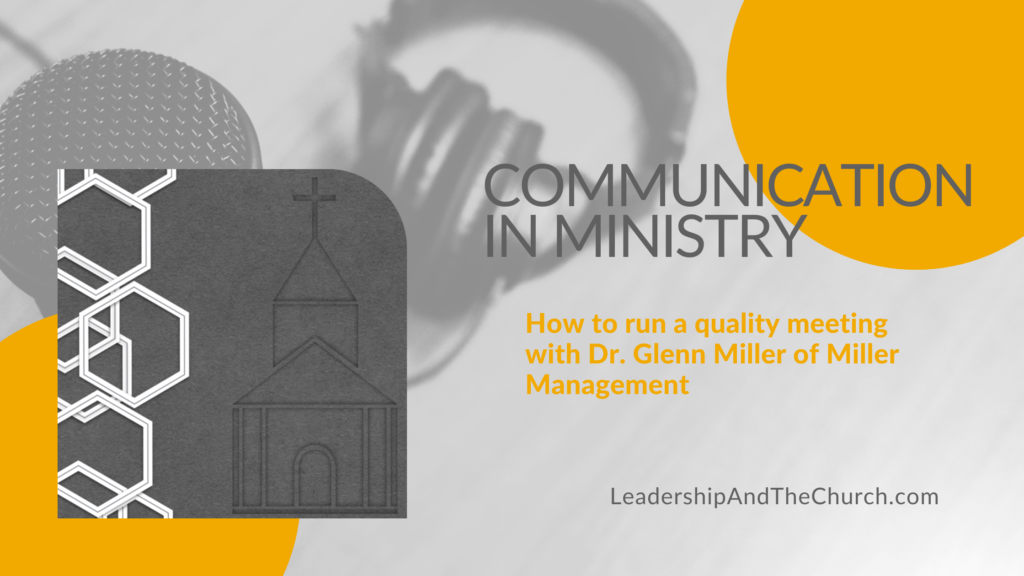Chris Miller, President of Miller Management, is the host of this week’s episode. He is joined by his colleage, Dr. Glenn Miller, CEO of Miller Management.

The first episode in this series was part one of the discussion of one on one communication, the subsequent week was part two of that discussion. Then we turned our focus to group communications. Today, we will discuss how meetings can effectively move your organization forward.
Organizational Communications
In order to have good organization communication with your organization, you need some of the same qualities of one-on-one. Consistency, trust, and multiple quality mediums of communication. Sharing good news and bad news actually helps build the consistency and trust levels. People would rather have all the information.
Know your audience to know if newsletters, social media, bulletins, or text are the best form of communication. Hint, it could be all of the above to reach a wider audience. But don’t just copy what the church down the street is doing – they have a different congregation than yours.
Whatever you use, must be kept up to date. Your newsletter, website, and text communication should all have the same date for the event, for example. On a similar note, websites are the new front door of your organization, so make sure pertinent information is on there and updated. Keep colors, fonts, and all other branding the same across all platforms.
“There is a difference between interest and commitment. When you are interested, you do those things only when the circumstances permit. When you are committed to something, you except no excuses, only results.”
You have to put money, time, and commitment into your organizational communication.
Meeting Etiquette
Before we get to the Four D’s, let’s go over some meeting etiquette.
Good meetings need a start and end time. No exceptions. Set a continuation time if you aren’t done. Good meetings have agendas. This will help keep your time on track. Good meetings meet in the right space at the right time. Note the space and timing for the people involved. Finally, good meetings don’t allow raw meet to be thrown on the table. These are items not on the agenda, yet. We encourage you to do your homework and add it to the next meeting, if applicable.
If you stick to these ideas, you will have better meeting participation and involvement.
Learn more about quality meetings on Miller Management’s blog.
Four D’s of a Quality Meeting
Now onto the Four D’s. Sometimes you only need one of these “D’s” to have a great meeting, but some need all – for the more complex meetings.
- Data collection
- Discussion
- Deciding
- Doing
First, you need to have data to backup your agenda items – remember that raw meet from earlier? Next comes the discussion. Use language like “this is how I see it” and let others do the same. After the discussion comes the deciding. This may be when the board votes, or for smaller issues, the person incharge makes an informed decision. Which sets us up for tasks and timelines for the teams involved – the doing.
That concludes our podcasts with Dr, Miller. Thankful we have these audio clips to continue his legacy.
Join us next month for a new topic and conversations with Chris Miller and other guests.
Join the conversation, see behind the scenes, and learn more on our Instagram and X pages.
Special thanks to our guest, Dr. Glenn Miller, and our masters of all things Podcasting, Chris and Lauren Miller, for this final episode in our Communication in Ministry series.
